“Ni Hao, China.” “Xin chao, Vietnam.” “Kumusta, Philippines.” “Shalom, Uzbeksitan.” “Apa kabar, Indonesia.”
These are all part of the series of Kkureomi (꾸러미) Culture Discovery Boxes. Each set of boxes got its name from a short greeting in the target country's main language.
This multicultural project is a kind of “moving museum” designed to help children better understand other countries by introducing related information about life outside Korea. Since 2010, the National Folk Museum of Korea has been developing its "multicultural package project" in order to meet and reflect the rapid changes going on in Korean society as it heads toward becoming more multicultural.
The project aims at widening understanding among Korean children of other ways of life, while focusing on improving society's recognition and acceptance of multiculturalism. Since it started, it has developed a series of "culture discovery boxes" to introduce Vietnam and Mongolia (2010), the Philippines (2011), Korea itself (2012), Uzbekistan (2013), Indonesia (2014) and China (2015). This year, the museum is developing a new series of Kkureomi Culture Discovery Boxes that will introduce Japan.
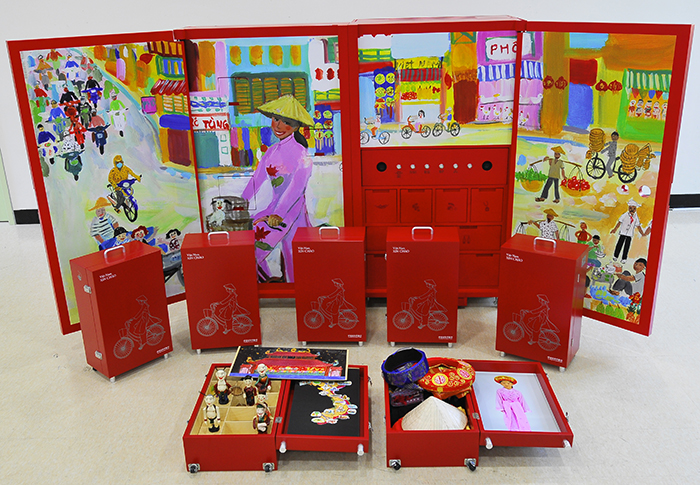
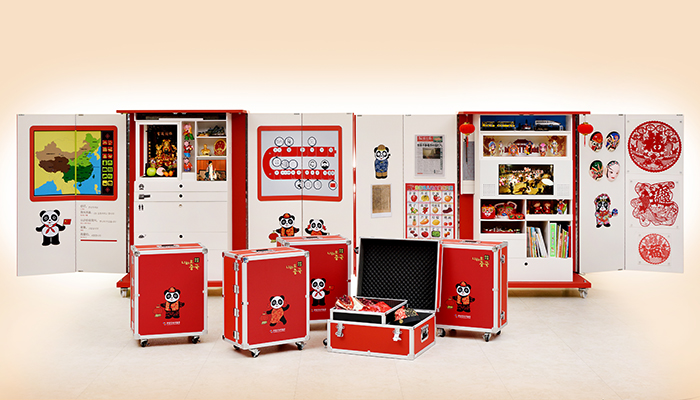
Each cultural discovery box is comprised of one big, human-sized box and several smaller boxes. These boxes, or trunks, contain various things that help people understand more about other countries, such as audio-visual resources or educational material.
In the case of last year's new China box set, the package was composed of one big box and four smaller boxes. The boxes contained information about daily life in China, introduced aspects of Chinese history and traditions, and outlined some yearly Chinese ceremonies and holidays. Thanks to these boxes, people here can learn more about Chinese history, the natural environment, food, clothing, homes, traditional holidays and various aspects about what life is like for children in China, all while using folk songs and musical instruments. For example, thanks to the picture book and flash animation included in the box, the children will be able to learn about the legend of Hou Yi and Chang'e and about the origins of the Mid-Autumn Festival. All of the material in the boxes was brought directly from China and the overall content was reviewed by a researcher at the Beijing Folklore Museum.
All the "discovery boxes" have similar content. The Vietnam box contains a traditional Vietnamese ao dai dress, the folk game tet, similar to the Korean jegichagi or shuttlecock kicking, and the traditional trong cơm drum. In the Mongolia box, children will find some interesting material such as a portrait of Genghis Khan (1162-1227), the founder and great khan of the Mongolian Empire and who unified the many Mongolian tribes, a replica of a ger, a portable round tent used as housing in the past, and a khel khuur, a harp-shaped traditional musical instrument.
To see these cultural discovery boxes, the best way is to attend one of the educational programs offered at the Children’s Museum at the National Folk Museum of Korea. Students can boost their understanding of other countries while learning about flags, maps, currencies, stamps, traditional clothes, folk games and musical instruments, and consuming educational material with all five senses. They will be able to think about some of the similarities and differences between Korea and other countries, and learn how to live peacefully with people who are different. All the classes involve instructors from the country of origin.
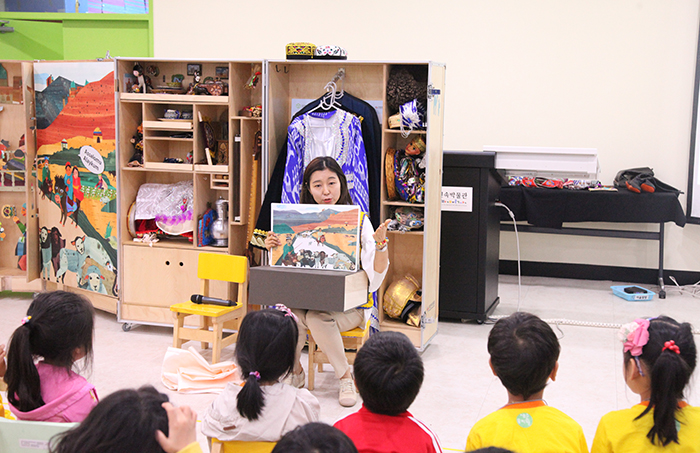
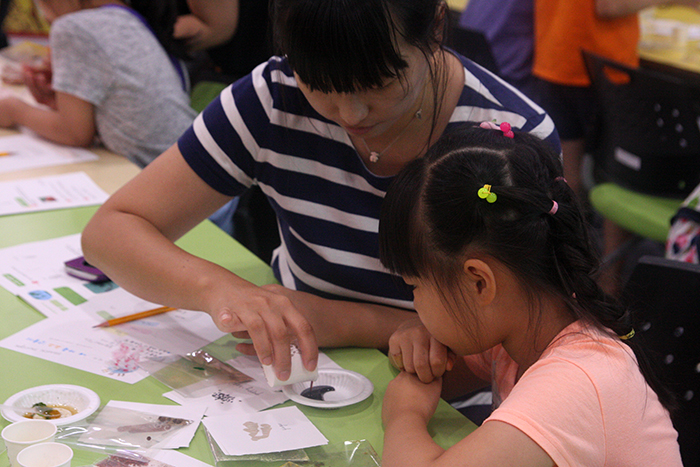
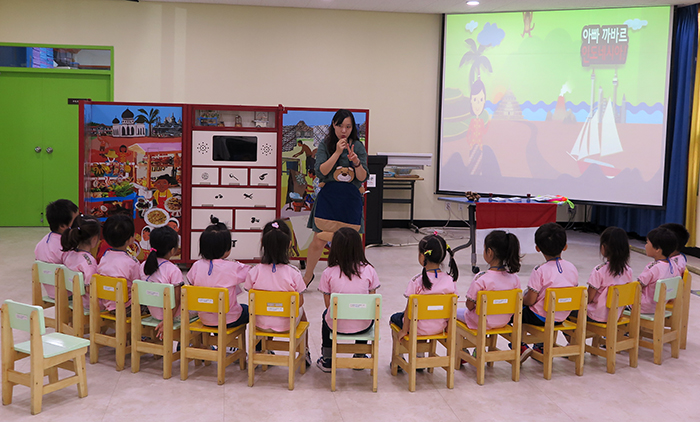
Those who are unable to visit the museum can still learn from these multicultural boxes. The museum manages a visiting teaching program every other week. The three smaller boxes of each Kkureomi Cultural Discovery Box can be lent out to museums, libraries, schools or multicultural centers across the country. About 100 organizations borrow these smaller boxes every year. To borrow one, please apply at the museum's homepage.
Behind this multicultural project lies the firm hand of Cheon Jingi, director general at the National Folk Museum of Korea. Cheon says, “We should introduce other cultures and societies, as well as our own history and traditions, in order to broaden understanding. We should contemplate how all human beings coexist together, and work toward ways to achieve a harmonious coexistence and co-prosperity across all of humankind. To this aim, the National Folk Museum of Korea has been running the Kkureomi Culture Discovery Box project, designed to help children learn about other countries and to widen understanding.”
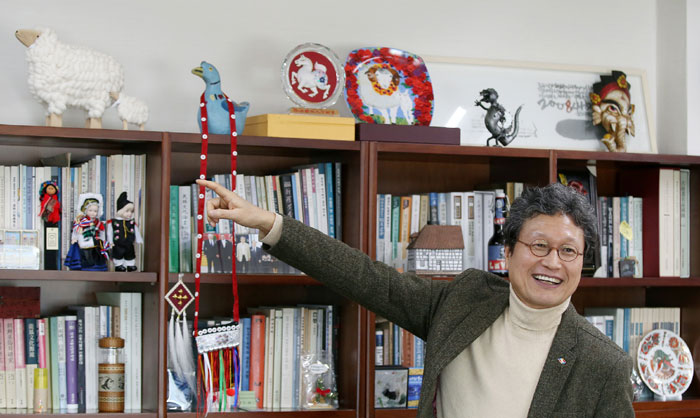
More information about the Culture Discovery Box program is available at the museum's homepage. http://www.nfm.go.kr/index.nfm
By Yoon Sojung
Photos: National Folk Museum of Korea, Jeon Han
Korea.net Staff Writer
arete@korea.kr
These are all part of the series of Kkureomi (꾸러미) Culture Discovery Boxes. Each set of boxes got its name from a short greeting in the target country's main language.
This multicultural project is a kind of “moving museum” designed to help children better understand other countries by introducing related information about life outside Korea. Since 2010, the National Folk Museum of Korea has been developing its "multicultural package project" in order to meet and reflect the rapid changes going on in Korean society as it heads toward becoming more multicultural.
The project aims at widening understanding among Korean children of other ways of life, while focusing on improving society's recognition and acceptance of multiculturalism. Since it started, it has developed a series of "culture discovery boxes" to introduce Vietnam and Mongolia (2010), the Philippines (2011), Korea itself (2012), Uzbekistan (2013), Indonesia (2014) and China (2015). This year, the museum is developing a new series of Kkureomi Culture Discovery Boxes that will introduce Japan.


Since 2010, the National Folk Museum of Korea has been developing a series of Kkureomi Culture Discovery Boxes. The Vietnam boxes were developed in 2010 and the China boxes were created in 2015.
Each cultural discovery box is comprised of one big, human-sized box and several smaller boxes. These boxes, or trunks, contain various things that help people understand more about other countries, such as audio-visual resources or educational material.
In the case of last year's new China box set, the package was composed of one big box and four smaller boxes. The boxes contained information about daily life in China, introduced aspects of Chinese history and traditions, and outlined some yearly Chinese ceremonies and holidays. Thanks to these boxes, people here can learn more about Chinese history, the natural environment, food, clothing, homes, traditional holidays and various aspects about what life is like for children in China, all while using folk songs and musical instruments. For example, thanks to the picture book and flash animation included in the box, the children will be able to learn about the legend of Hou Yi and Chang'e and about the origins of the Mid-Autumn Festival. All of the material in the boxes was brought directly from China and the overall content was reviewed by a researcher at the Beijing Folklore Museum.
All the "discovery boxes" have similar content. The Vietnam box contains a traditional Vietnamese ao dai dress, the folk game tet, similar to the Korean jegichagi or shuttlecock kicking, and the traditional trong cơm drum. In the Mongolia box, children will find some interesting material such as a portrait of Genghis Khan (1162-1227), the founder and great khan of the Mongolian Empire and who unified the many Mongolian tribes, a replica of a ger, a portable round tent used as housing in the past, and a khel khuur, a harp-shaped traditional musical instrument.
To see these cultural discovery boxes, the best way is to attend one of the educational programs offered at the Children’s Museum at the National Folk Museum of Korea. Students can boost their understanding of other countries while learning about flags, maps, currencies, stamps, traditional clothes, folk games and musical instruments, and consuming educational material with all five senses. They will be able to think about some of the similarities and differences between Korea and other countries, and learn how to live peacefully with people who are different. All the classes involve instructors from the country of origin.

Children listen to an explanation about Uzbek traditions during a class featuring the Uzbekistan Kkureomi Cultural Discovery Box.

Parents and children learn about food from Korea, Indonesia and Uzbekistan as they mix their own spices.

Young people learn about Indonesia in a class featuring the Indonesia Kkureomi Cultural Discovery Box.
Those who are unable to visit the museum can still learn from these multicultural boxes. The museum manages a visiting teaching program every other week. The three smaller boxes of each Kkureomi Cultural Discovery Box can be lent out to museums, libraries, schools or multicultural centers across the country. About 100 organizations borrow these smaller boxes every year. To borrow one, please apply at the museum's homepage.
Behind this multicultural project lies the firm hand of Cheon Jingi, director general at the National Folk Museum of Korea. Cheon says, “We should introduce other cultures and societies, as well as our own history and traditions, in order to broaden understanding. We should contemplate how all human beings coexist together, and work toward ways to achieve a harmonious coexistence and co-prosperity across all of humankind. To this aim, the National Folk Museum of Korea has been running the Kkureomi Culture Discovery Box project, designed to help children learn about other countries and to widen understanding.”

The National Folk Museum of Korea runs the Culture Discovery Box program, designed to boost understanding of other countries. Director General Cheon Jingi talks about various folk items from around the world.
More information about the Culture Discovery Box program is available at the museum's homepage. http://www.nfm.go.kr/index.nfm
By Yoon Sojung
Photos: National Folk Museum of Korea, Jeon Han
Korea.net Staff Writer
arete@korea.kr